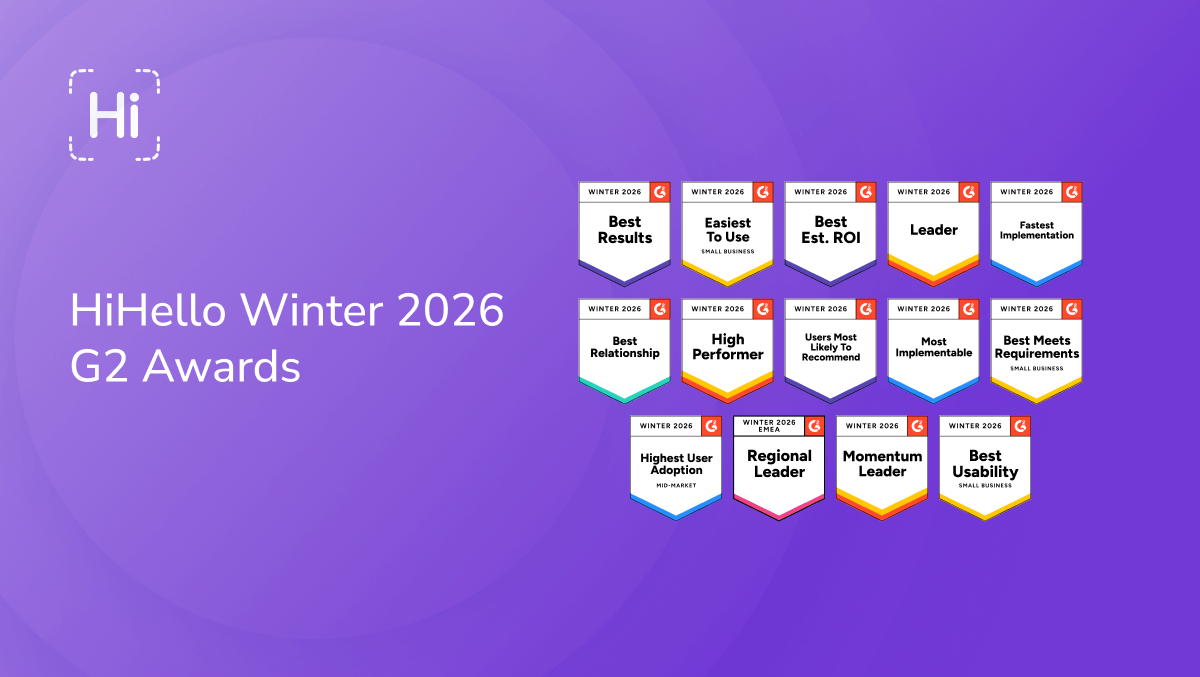The humble business card isn’t dead, but it has evolved, and creating a business card is more than just adding your name and phone number to a little piece of paper. Incorporating a QR code into your business card can bridge the gap between physical and digital networking, providing instant access to your contact information, portfolio, or professional profile. This guide will walk you through the process of creating and using QR codes for your business cards, helping you make a lasting impression in any networking scenario.
What is a QR code for business cards?
QR codes, or Quick Response codes, are similar to a barcode on an item in a store. They are a two-dimensional collection of small squares that can contain various types of data. QR codes can be used to support your business card in multiple ways.
Most commonly, and increasingly popular, QR codes contain links to digital business cards, making paper business cards obsolete.
For people who prefer paper business cards, QR codes can also assist by going on the back of your card so you can share more information than what your paper card can contain.
.avif)
Benefits of using a QR code business card
If you’re ready to go digital, using a QR code business card to replace your paper card comes with a lot of benefits, but here are just a few of the most important ones:
1. They’re free.
Or, at least, they can be with the right platform (like HiHello). That’s a huge advantage over paper cards, which can quickly get expensive.
2. They can be shared with anyone, anywhere
Not only does your QR code go wherever your phone goes, so you’re a lot less likely to end up somewhere without them, but they can also be shared with anyone, anywhere. Whether you’re in person, at a virtual meet-up, or reaching out over email, anyone can view your business card.
4. Trackable interactions
One thing you can’t do with a paper business card is track how effective it is. But with a digital card, you can see exactly how many people viewed your card, saved it, shared their information, and so much more with built-in analytics.
.avif)
5. It’s always up-to-date
That title change is so exciting (congrats!), but then it comes time to share a business card, and you don’t have the excitement of that brand-new promotion you earned because your new stack hasn’t arrived yet. Whether you got a promotion, a new phone number, changed your name, or something else, with a digital business card, you can update it in a few taps, and your new card is ready to share instantly.
Benefits of using QR codes on business cards
Adding a QR code to your business card offers several advantages:
1. Space-Maximizing
One huge negative of a paper business card is that they’re very limited by space. When you have websites, social media channels, portfolios, and more, it’s hard to decide what is most important to include on your card. The beauty of including a QR code on your business card is that you don’t have to choose. You can include as much information as you want beyond your business card.
.avif)
2. Maintaining a tangible card
If you’re not ready to give up a tangible card, adding a QR code is a great way to give yourself the benefits of a digital card without losing your traditional paper card.
How to create a QR code for your business card
1. Choose a QR code generator
The first step is to pick a QR code generator that fits your needs. Our recommendation is HiHello. With HiHello, you can create a QR code for free that links directly to a digital business card and acts as a landing page for all your contact information, links, social media, payment apps, and so much more.
It’s important to consider QR code safety when choosing a generator. QR codes can be an incredibly trustworthy and secure way to share information, but that’s only as true as the source you create it from. Be sure to choose a platform with security certifications, like SOC 2 Type II, to protect yourself and your new connections.
2. Choose what information you want to include
How you present yourself when making new connections is essential, and what information you share is a big part of that presentation. Your QR code could link to a single link like a website or a LinkedIn profile, or if you choose to link it to your digital business card, you can include even more, like:
- Your Resume
- Payment apps
- Website links
- Portfolios
- Social media
- And much more because you’re not limited to a single link
Pro tip: some QR code generators let you customize your QR code so you can add your branding and logo to it as well.
3. Start connecting - download, share, and more
Your QR code is ready! Now it’s time to use it. Download your QR code, add it to your Apple Wallet, make a QR code widget for your phone, or learn all the other ways to share.
The great thing about some QR codes is that once you make it, you can update the information linked to it, but your QR code will never change, so you won’t have to worry about updating it. Get creative by adding it to your LinkedIn banner or virtual background, or print out stickers to paste around town. The options are endless!
.avif)
Best Practices for QR Codes on Business Cards
- Test Your QR Code: Before printing, test the QR code to ensure it scans correctly and leads to the intended information. When you pick a secure and trustworthy generator, this shouldn’t be a problem, but it’s always a good idea to double-check.
- Provide Context: If you’re printing your QR code somewhere, include a brief instruction or call-to-action near the QR code, such as "Scan to connect,” so people know what it is.
- Make it recognizable: Make sure you add your logo or branding to your QR code so it’s instantly recognizable.
- Update as Needed: Don’t forget to keep your linked information up to date. Your QR code won’t change, but the information you share might need to.
Frequently asked questions about QR codes
What information can I include in a QR code for my business card?
You can include various types of information in your QR code, such as your contact details, website URL, social media profiles, or a link to your digital business card. Not sure what to include? Check out our list of the five must-have things to put on your business card.
How do I scan a QR code on a business card?
Most modern smartphones can scan QR codes using their built-in camera app. Simply open the camera, point it at the QR code, and tap the notification that appears. You can also use the built-in scanner in the HiHello app to scan any QR code.
Are QR codes on business cards becoming more common?
Yes, QR codes on business cards are increasingly popular. The more popular choice, however, is to go 100% digital.
Can I track how many people scan my business card QR code?
Yes! If you use a QR code service like HiHello, you can track everything from views to saves and contacts created with the built-in analytics dashboard.
How do I ensure my QR code is scannable?
If you’re printing your QR code, make sure it's at least 2 x 2 cm in size, has good contrast with the background, and is not distorted or placed on a curved surface. By following these guidelines and using a reliable service QR code generator, you can create an effective QR code for your business card that enhances your networking capabilities and professional image.




